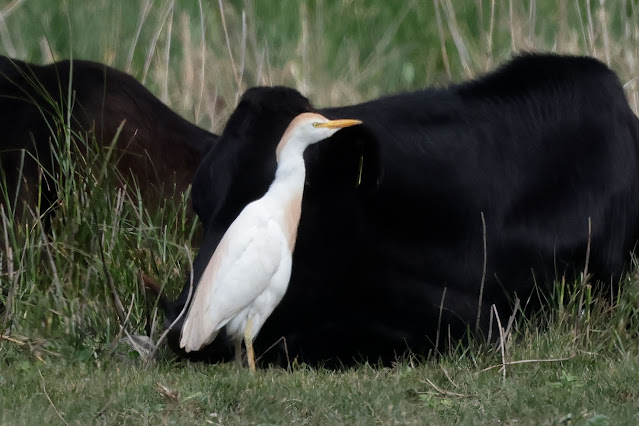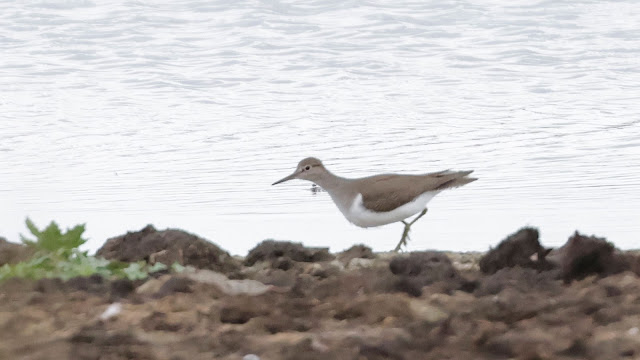A Pectoral Sandpiper was reported from Farlington yesterday, I had already made my mind up I was going there today and I didn't hold up hope that it would be there, just recently they seem to be one day birds.
I walked from the car park and out towards the Lake. The tide was high, with still a couple of hours until the designated high tide. There were plenty of waders on the roost on the lake, but all distantly at the back of the water.
Looking across the reed bed there were patches of reed coming back which was very welcome after the devastation here at the start of the year.
I left the Lake and walked around the stream. There were plenty of butterflies amongst the flowers, knapweed and ragwort. Mostly Gatekeeper, but there was also a few Meadow Brown and Small Heath.
Passing the viewpoint at mid point of the stream, all the waders and gulls close to the info hut went up. There was nothing immediate that could have been the reason, but then I picked up a female Marsh Harrier high above the reeds.
Back amongst the flowers there was a few Common Blues.
But it was the Gatekeeper that dominated.
At the information hut I scanned the water and mud for waders, but the only ones present were a few Black-tailed Godwits and Lapwings. Swallows swooped low over the water and around the reeds.
I stuck it out and sat on the bench and ate my lunch. A Green Sandpiper came from nowhere and flew off into the reeds and out of sight. The closest to a sandpiper this morning.
Behind the Information hut there was a small group of cattle and a couple of Cattle Egret flew in and were feeding around the cattle that were all lying down.
Creeping around the cattle, picking the flies off the muzzle and ears.
There walk is interesting, probably doing so to help with picking the insects from the grass. They stand upright and hold the head back with the neck curved.
These are adult birds still showing the rusty plumes of the head feathers and the rust on the breast.
Officially known as the Western Cattle Egret, this looks very smart.
Coming towards me were four Avocet and they passed by heading towards the water by the info hut
I decided to make my way back to the Lake, but at the Stream viewpoint I found a couple of Common Sandpipers. Distant but clearly a Common Sandpiper.
The Common Sandpiper, flew away into the short reeds and as they dropped a Green Sandpiper came up called flew around and then dropping out of sight once more.
As I reached the end of the stream there was a group of large gulls. Scanning I was taken by one gull that was lying down. The mantle was grey, but not the light grey of a Herring Gull. Fortunately it was lying next to a definite Lesser Black-backed Gull.
I edged a little closer and the gull stood up to reveal a set of yellow legs. It looked a good bet for an adult Yellow-legged Gull, but in sharing back of camera photograph the view was it was a Lesser Black-backed. Looking at these and after getting the opinion of someone else I would be happy to go with Yellow-legged Gull.
The comments I have are red bleads into the upper mandible, the mantle seems OK, the legs are the right colour. There are small mirrors on the primaries and it appears long legged above the knee joint.
I ended up back at the Lake where the wader roost was now quite sizeable. Good numbers of Redshank, Oystercatcher and Black-tailed Godwits. Amongst these were Dunlin and a single Knot. Some other birders pointed out a Wood Sandpiper at the back of the Lake that was spending time weaving amongst the dead reeds before coming out on to the mud.
It took some time, but I finally managed to find the single Curlew Sandpiper amongst the Dunlin.
The only photograph taken was of the roost of Greenshank in the middle of the Lake.
A good three hours at Farlington, again nice to see the waders returning and nice to get the hat trick in Common, Green and Wood Sandpiper. Still not sure about the gull






















No comments:
Post a Comment